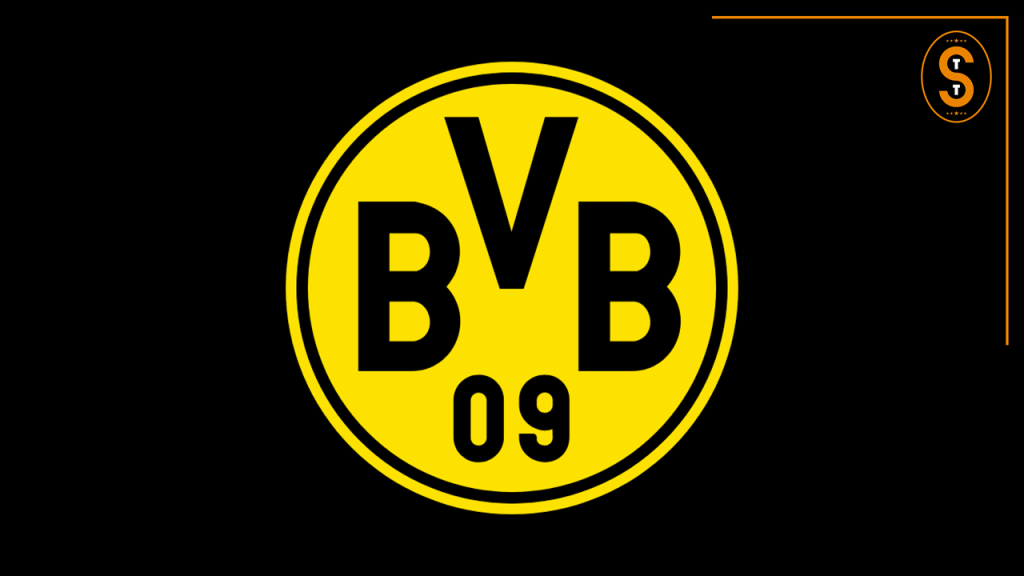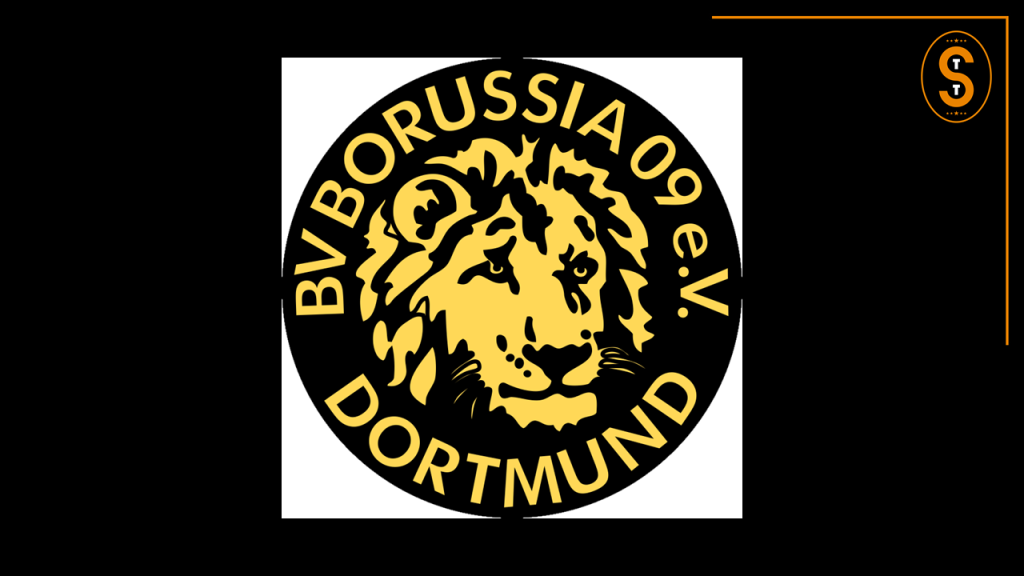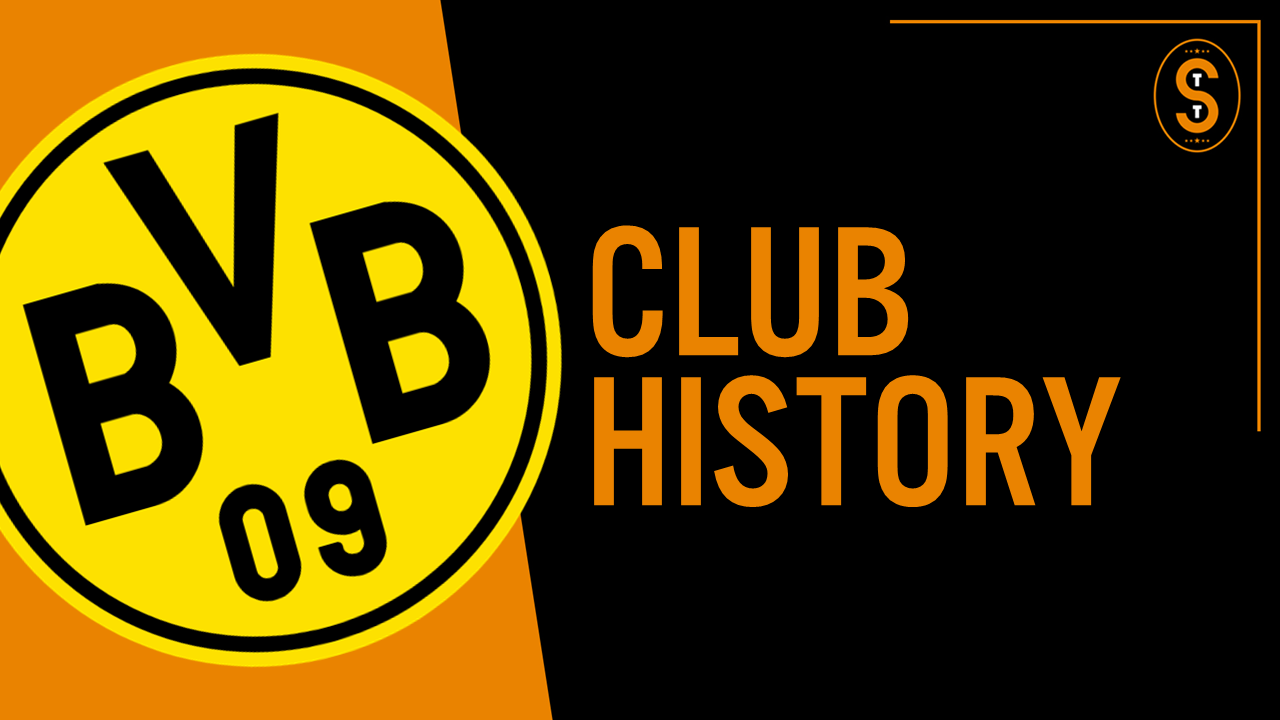Welcome to the Soccer Tavern, where we’re discussing the history, philosophy, and culture of the beautiful game. My name is Dave and in this video, we’re talking about the history of Ballspielverein Borussia 09 e.V. Dortmund, better known as Borussia Dortmund. Pull up a seat and let’s start the discussion.
Borussia Dortmund is located in the central, slightly southern part of city of Dortmund. Dortmund is located in the western part of Germany. The club currently play in the Bundesliga and its home ground is called the Signal Iduna Park. It was previously known as Westfalenstadion. The stadium opened in 1974 and currently has a capacity of more than 81,000 people.
Origin
On December 19, 1909 more than 40 people met at the Zum Wildschutz restaurant with the intention of forming a soccer club. These people were youth members of the Catholic Holy Trinity church and felt that they had been persecuted by other members of the church for being soccer players.
The leader of the church, Father Hubert Dewald, showed up at the meeting and was able to convince more than 20 members not to leave. But 18 members founded Ballspielverein Borussia null neun on that night.
Ballspielverein means ball game club. It was a designation that the club would mainly play sports involving a ball (mainly soccer) rather than gymnastics, which was a staple of many other German clubs at that time. Borussia was a reference to the local Borussia brewery. The founders of the brewery took their name from the Latin name for Prussia, which was more or less the region in Europe that became Germany. And null neun are the numbers 09 to refer to the club’s founding year. Eventually the club would add Dortmund to the end of its official name in reference to the city the club plays in.
The club originally played in blue & white striped kits with a red sash on top and black shorts. In the summer of 1912, three other local clubs dissolved and merged into Borussia Dortmund. One of the clubs, named Britannia, had lemon yellow tops and it was decided that color would be worn going forward. The club has maintained the black and yellow color scheme ever since.
Nicknames
The club has 2 main nicknames: Bay-fow-bay and Die Schwarzgelben. You might also sometimes see the nickname of Die Borussen, but that isn’t as common.
The Bay-fow-bay nickname are the letters BVB pronounced in German. It comes from the first part of the club’s official name, Ballspielverein Borussia. Ballspielverein is a compound word of Ballspiel (meaning ball game) and Verein (meaning club), which we’ve already discussed. That’s where the B and the V come from. And you guessed it, the second B comes from the word Borussia, which we’ve already mentioned is latin for Prussia. The BVB nickname is an acronym of the club’s name.
The other main nickname of die Schwarzgelben doesn’t require much of an explanation. It simply refers to the club colors – black (schwarz) and yellow (gelb) – the ‘en’ at the end makes the word plural.
And the nickname of Die Borussen, just means the Prussians and comes from the first word of the club’s official name.
Crest
BVB has a very straightforward crest.

This logo has more or less been the club’s crest since the 1940s with the exception of a few years in the 1970s that included a Samson lion’s head. Samson was a tobacco company and sponsor of Dortmund for a few years, so this change was made to appeal to a corporate sponsor. It was short lived and the crest returned to a version of the iconic crest we all know by 1978.

The crest is simply the club’s acronym of BVB with the numbers 09 in the club’s colors of black and gold. All of those things should be self-explanatory based on what we’ve already covered in this video.
Important Events
The first event I want to discuss in this section happened on June 24, 1956. Dortmund played Karlsruher SC in the final of the German national championships in Berlin. The national championship was the highest title in Germany at that time because this was before the Bundesliga existed. Dortmund came out 4-2 victors on the day, for their first major title.
Now, the story doesn’t end there, as the following day, the team rode a train back to Dortmund with their wives. There was some weird politicking going on between the players and the board at the club during the 1950s and the board wanted to present the players to their fans without the players’ wives. So, the board planned to separate the wives and players by having the players on a car towards the front of the train, while the wives would be on a car further back. They then planned to unhook, the wives’ car and arrive with just the players. I swear I’m not making this up as this story comes from the official Dortmund website. The players got wind of this and decided to intermingle amongst all the wives, so the board couldn’t execute their plan. It’s quite an interesting story from the club’s past.
The next event I want to highlight happened on May 6, 1966. On this date, Dortmund played Liverpool in the final of the UEFA Cup Winner’s Cup in Glasgow, Scotland. Dortmund were the underdogs in the match, but won 2-1 with a wonderfully chipped goal by Reinhard Libuda in the 106th minute. Dortmund became the first German club to win a European title with this victory.
The club went through some rough periods in the 1970s and 1980s, so let’s flash forward to the mid-1990s. On June 17, 1995, Dortmund won 2-0 over Hamburger SV to clinch its first ever Bundesliga title, which they defended the following season. An even more historic event happened the following year. On May 28, 1997 BVB played Juventus in the final of the UEFA Champions League. Just like in its first European title against Liverpool, Dortmund were the underdogs, but pulled off the upset with a 3-1 victory. It is one of the most glorious days in the club’s history.
Before we move on, I do want to highlight that the club was in a dire financial position in 2003. Bitter rivals FC Bayern loaned Dortmund €2m to pay player salaries. Dortmund paid the loan back in less than a year, but without this assistance, who knows where the club might be today.
Supporters
Within Dortmund’s magnificent stadium is the Südtribüne or South Bank. This is Europe’s largest single-tier standing terrace and also has another nickname, which is the Yellow Wall. More than 24,000 people are packed into the Yellow Wall on matchdays and it creates an absolutely stunning visual, as well as auditory, experience.
Dortmund also has the highest average attendance per match of any Bundesliga club and is regularly among the top 5 in average attendance per match for any club in the world.
Noteworthy Players
A club with a storied history like Dortmund has had many amazing players. I’m going to highlight 6 of them here, but if you have other players that deserve mention, please let us know in the comments section.
Alfred “Aki” Schmidt played at the club in the 1950s and 60s. Dortmund was the only club he played for in his career, making more than 250 appearances over a 12 year period for the black & yellows. The club won 4 major trophies during his time with BVB as Schmidt provided outstanding leadership.
Manfred Burgsmüller deserves mention because although he played during a rough period in the 1970s for Dortmund, he scored 158 goals in only 251 games. His goalscoring might be a record at the club, depending on who you ask, which we’ll discuss later in the video. Burgsmüller was captain during his last 4 seasons at the club before leaving in 1983 and is one of the greatest midfielders in BVB’s history.
Michael Zorc is widely considered the greatest legend in Borussia Dortmund’s history. Zorc made his pro debut in 1981 and would appear in 571 matches for the black & yellows during his career. He was a one club man who led both on and off the field. He captained Dortmund for 8 seasons, winning 2 Bundesligas, a DFB Pokal, and a Champions League. Zorc is another player who might be considered the club’s all-time record scorer depending on who you ask. Stay tuned for more info on that situation.
Matthias Sammer is one of the greatest ever Bundesliga players. Though Sammer played at a handful of other clubs during his career, he is a BVB legend. Sammer is one of the highest scoring defenders in world soccer’s history. The pinnacle of his career came in 1996 as he helped Dortmund win the Bundesliga title and Germany win the Euros. That led to him winning the 1996 Ballon d’Or, given to the best player in Europe (widely considered the best player in the world). Sammer is the only Dortmund player to ever win the award.
Roman Weidenfeller & Marco Reus are two modern legends for the club. Weidenfeller was a goalkeeper at the club from 2002 to 2018. In his 17 years at the club, BVB won 2 Bundesliga titles and 2 DFB Pokals. He made more than 450 appearances for the club and is likely the best keeper in the club’s history.
And finally Marco Reus is still an important player for the club, making over 200 appearances and counting. His career has been unfortunately blighted by injury issues, but when he is healthy, he can be one of the best attackers in the Bundesliga. His legend will likely continue to grow at the club for many more years.
Noteworthy Managers
The two greatest managers in BVB’s history are Ottmar Hitzfeld and Jürgen Klopp. Each took over when Dortmund was in a down period and turned the club around to win major titles.
Hitzfeld took over a struggling Dortmund side in 1991. He was an unknown manager arriving from Switzerland, so expectations were relatively low at the time. Over the next 6 years, he built Dortmund into a perennial title contender, including winning the Bundesliga twice and the Champions League in 1997. He is recognized as one of the greatest managers of his generation. He also holds a unique distinction as being the only manager to defeat Sir Alex Ferguson’s Manchester United both home & away in a 2-legged-European tie. After winning the Champions League with Dortmund, he left to join Bayern Munich, where he would go on to win a number of titles and become one of the most decorated German managers in history.
The other great manager in Dortmund’s history is Jürgen Klopp. Klopp joined BVB in 2008 after making a name for himself managing at Mainz. The prior few seasons for Dortmund were middling, but Klopp set the club on a route back to winning titles. He implemented a high-pressing, counter-attacking style named “gegenpressing” which was described as heavy-metal football or soccer. The entertaining brand of soccer led Klopp’s side to the Bundesliga title in the 2010-2011 season. They followed that campaign with Dortmund’s most successful season ever by winning the Bundesliga title with a record number of points at that time and also winning the DFB Pokal.
That is the only time in the club’s history that the club has won a domestic double. BVB would also make a Champions League final under Klopp, although it unfortunately ended in a loss to rivals Bayern. Klopp would leave BVB after the 2014-2015 season. He currently manages Liverpool FC in England and is one of the most entertaining and well-respected managers in the world.
Rivals
Dortmund’s two main rivals are unquestionably FC Schalke 04 and FC Bayern München (Munich).
Matches between BVB and Schalke are called the Revierderby and this matchup is widely considered one of the fiercest rivalries in all of the Bundesliga. Both clubs are located in the Ruhr region of Germany that is famous for hard-working, blue-collar citizens. This hard-working spirit comes from the region being an epicenter of the coal-mining & steel-forging industries. The region is also obsessed with soccer and these two clubs are arguably the biggest clubs in that region. They’re separated by less than 25 miles and have met more than 150 times since first playing in 1925.
Additionally, a match in Dortmund in 1969 saw overcrowded fans rush the pitch after Schalke took an early lead. Police tried to control the fans with German Shepards, who unfortunately bit 2 Schalke players in the chaos. That certainly led to increased tensions between the clubs and the rivalry has grown from there. Dortmund also helped extinguish Schalke’s title hopes in 2007, which continued to amplify this already full-fledged rivalry.
BVB’s other main rivals are FC Bayern Munich. The clubs didn’t first meet until 1965, but have played over 100 matches against each other since that inaugural game, which Dortmund won 2-0 on the road. Bayern has had the upper hand since then in terms of winning trophies, as well as matches in this matchup. Quite frankly, this wasn’t much of a rivalry until recently.
The cities are more than 350 miles apart and Dortmund only started becoming a perennial trophy contender in the 1990s. The most recent memorable match came in the 2013 Champions League Final, which Bayern won 2-1. Matches between these two clubs are called Der Klassiker, which loosely translates as the classico. The rivalry will only continue to grow as Dortmund continues to build its case as the second biggest club in Germany behind Bayern.
Stats & Records
The stats and records we’re about to discuss are as of October 2019, which is when we are recording this video.
Dortmund has played 53 seasons in the top flight in its history.
The club has 14 major trophies including:
- 3 German national titles before the Bundesliga was created
- 5 Bundesliga titles
- 4 DFB-Pokals or German Cups
- 1 UEFA Champions League
- 1 UEFA Cup Winners Cup
BVB’s record first team appearance holder is Michael Zorc with 571 first team appearances.
Technically, the black & yellows’ all-time top scorer is Alfred Preissler with 175 goals. These goals came before the Bundesliga and a national league existed, so the top scorers in the Bundesliga era are:
Michael Zorc and Manfred Burgsmüller. The reason I highlight 2 players is that Michael Zorc had 159 first team goals, but 3 of his goals came in relegation playoff matches and 1 other came in a now defunct competition called the Intercontinental Cup. So, some people only recognize him as having 155 or 158 goals.
Manfred Burgsmüller had 158 first team goals. I’ll let you decide who you want to view as the club’s all-time top scorer.
Dortmund’s record transfer purchase was Mats Hummels from Bayern Munich on June 19, 2019 for a little more than €30M. The transfer officially processed on July 1, 2019 when the transfer window opened.
And the club’s record transfer sale was Ousmane Dembélé to FC Barcelona in Spain on August 28, 2017 for an initial fee of ~€105M that could rise as high as €147M.
And 1 last interesting fact about the club: in October of 2000, Borussia Dortmund became the first and I believe still only German soccer club to be publicly traded on a stock exchange. The club was listed on the Frankfurt Stock Exchange, which is the largest German Stock Exchange. The club is still publicly traded at time of recording.
So there you have it… a bit of history on Ballspielverein Borussia Null Neun (09) Dortmund. Let’s continue the discussion in the comments section below the video.
Thanks for stopping by the Soccer Tavern. Hope to see you again soon. Prost!
